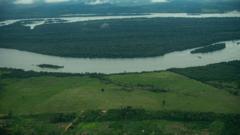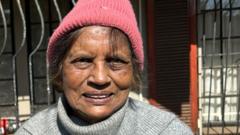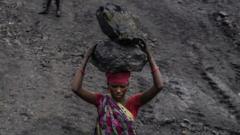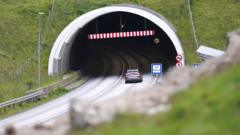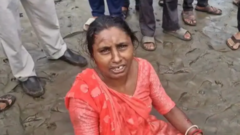The community of Pampa Clemesí, located near the massive Rubí solar plant, struggles with a complete lack of electricity even though they live next to one of the largest solar complexes in Latin America. While the plant generates enough power for thousands of homes, the local residents face a dire situation where basic electrification efforts lag behind, leaving them in the dark.
Living in Darkness Next to Peru’s Solar Power Giant
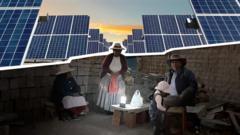
Living in Darkness Next to Peru’s Solar Power Giant
Despite residing beside Peru's largest solar complex, residents of Pampa Clemesí remain disconnected from the electric grid, highlighting a paradox in renewable energy access.
Residents of Pampa Clemesí, a small village in the southern region of Moquegua, grapple with the irony of living near Peru's largest solar power installation without access to electricity. Each morning, Rosa Chamami ignites cardboard scraps to fuel a small outdoor stove, the remains of boxes that once housed high-tech solar panels installed between 2018 and 2024.
The Rubí solar plant, positioned just 600 meters from her home, produces around 440 GWh of electricity annually, enough to power 351,000 households. Yet, as Rosa looks up at the bright panels, it serves as a constant reminder of the electricity that remains out of reach for her and the village’s 150 residents.
While a few locals have received solar panels from the plant's operator Orygen, the significant costs of batteries and converters prevent most from utilizing them. Instead, they rely on torches at night, battling the absence of basic electrification in a region famed for its ample sunlight.
Peru is currently experiencing a renewable energy surge, with a 96% increase in generation from renewable sources in 2024 alone. Nevertheless, energy expert Carlos Gordillo points out that the nationwide energy system prioritizes profitability over connecting remote and sparsely populated communities.
Orygen insists it has adhered to its obligations, having constructed 53 power towers and laid over 4,000 meters of underground cable as part of an $800,000 investment dedicated to connecting Pampa Clemesí to electricity. Despite these efforts, the final step of linking the power line to homes is lagging, with governmental inaction reportedly delaying the process.
Residents, many of whom have lived in Pampa Clemesí since its establishment in the early 2000s, find themselves in dire circumstances. There is a lack of water supply, sewage, and waste collection in the village. Pedro Chará, a long-time resident, lamented, “Sometimes, after waiting so long, fighting for water and electricity, you just feel like dying. That’s it. Dying."
With makeshift homes and no reliable means to store food, locals face daily struggles. Rosa hopes to gather with neighbors to share a meal, illuminated only by the faint light of a solar torch. It highlights their resilience, as they adapt to cooking over gas stoves or even wood when they can’t afford to purchase fuel.
The overarching issue remains the villagers' disconnection from the electric grid, which they believe would help revitalize Pampa Clemesí. "If we had electricity, people would come back," Pedro emphasizes. As another evening descends upon the village, Rosa prepares for another night in the dark, holding onto hope that the same sun fueling the solar panels will eventually bring them the light they so desperately need.





